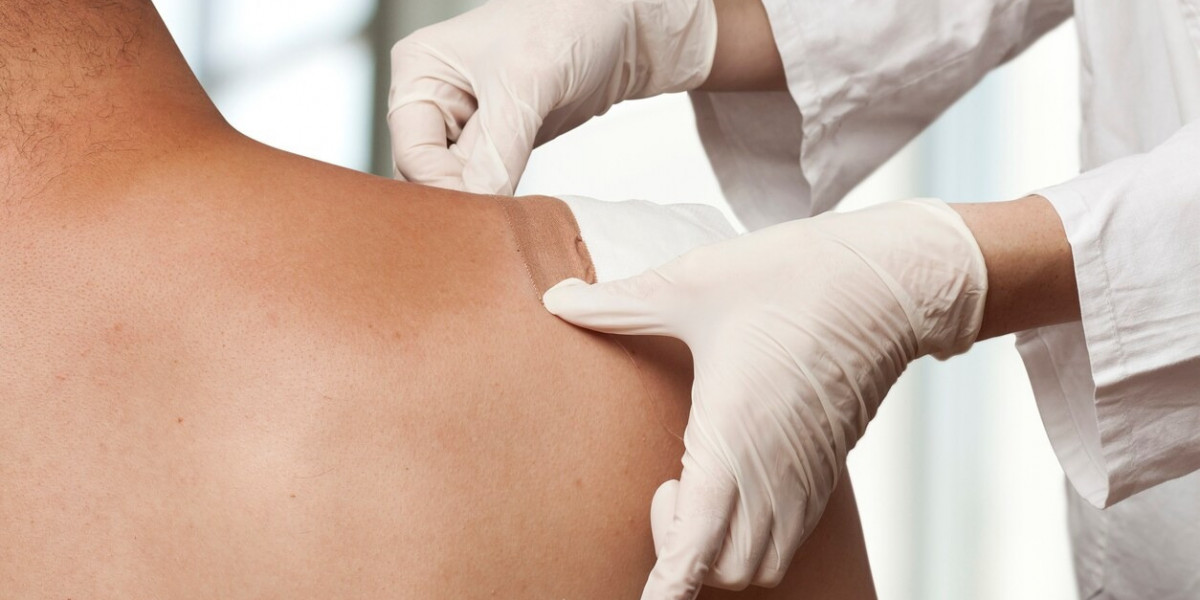Caring for a wound properly is essential for ensuring it heals quickly and without complications. Many people assume that minor injuries require no special attention, but failing to address wounds promptly can lead to infections and prolonged recovery. Understanding the signs that indicate you need professional wound care at home is crucial for maintaining your health. In today’s fast-paced lifestyle, Wound Dressing at home in Dubai has become a practical solution for individuals who prefer comfort and convenience while receiving the care they need.
Persistent Bleeding
One of the most obvious signs that a wound needs attention is persistent bleeding. While small cuts may stop bleeding within a few minutes, wounds that continue to bleed despite applying pressure may require proper dressing. Applying the right dressing can help control bleeding, protect the wound from external contaminants, and create a healing-friendly environment. Ignoring continuous bleeding can lead to blood loss and increase the risk of infection, making timely wound dressing essential.
Signs of Infection
Infections are a serious concern for any wound. Redness, swelling, warmth around the injury, pus or unusual discharge, and a foul odor are all warning signs that the wound is infected. Pain that intensifies over time rather than diminishing can also indicate bacterial growth. Prompt wound dressing helps prevent the spread of infection, absorbs exudates, and reduces inflammation, promoting faster recovery. Early intervention can prevent minor infections from escalating into severe health issues.
Delayed Healing
If a wound does not show signs of improvement within a few days, it may require specialized care. Delayed healing can be caused by improper cleaning, inadequate protection, or underlying health conditions. Dressing a wound at home can provide consistent protection, maintain moisture balance, and support tissue regeneration. By recognizing delayed healing as a sign that attention is needed, you can avoid complications and encourage the body’s natural repair processes.
Excessive Pain
While some pain is normal after an injury, excessive or worsening pain is a clear indicator that something is wrong. Pain may arise from infection, internal tissue damage, or irritation from friction and exposure. Proper wound dressing at home can reduce pain by cushioning the affected area, keeping it clean, and preventing additional trauma. Monitoring pain levels is an essential part of knowing when to act and care for your wound more effectively.
Exposure to Contaminants
Wounds exposed to dirt, dust, water, or chemicals are more susceptible to infection and delayed healing. Even a minor scrape can become serious if left uncovered in a contaminated environment. Dressing a wound at home provides a barrier against harmful elements, ensuring that the healing process continues uninterrupted. Regularly changing and maintaining the dressing further reduces the risk of contamination and supports faster recovery.
Changes in Color or Texture
Monitoring changes in the appearance of a wound can provide valuable clues about its condition. A healthy wound usually has a pinkish tone and shows gradual improvement over time. Darkening, excessive redness, or unusual textures like a thick scab or slime are signs that immediate attention is needed. Wound dressing helps stabilize the environment, promotes healthy tissue growth, and prevents further deterioration of the wound.
Fever or General Discomfort
Sometimes, systemic signs such as fever, chills, or general malaise may accompany a wound that is not healing properly. These symptoms suggest that the infection may be spreading beyond the localized area. Dressing the wound at home, alongside careful observation, allows for ongoing management and monitoring while ensuring the wound remains protected from external threats. Prompt action can prevent more serious complications from developing.
Recurrent Wounds
Some wounds may heal but reopen repeatedly, especially in areas prone to friction or pressure. Recurrent wounds indicate that additional protection and consistent dressing are necessary. Proper wound care at home minimizes movement-related disruption, supports the formation of new tissue, and reduces the chances of recurrence. Maintaining a routine care schedule is crucial for long-term wound management.
Sensitivity to Touch
If a wound becomes unusually sensitive or painful to touch, this may indicate underlying issues such as inflammation or infection. Gentle handling, supported by appropriate wound dressing, can reduce irritation and prevent further trauma. Protective dressings act as a buffer while allowing the area to heal without constant discomfort or accidental injury.
Unusual Odor or Fluid
The presence of a foul odor or excessive fluid from a wound is a red flag that immediate attention is required. These signs often indicate bacterial growth or tissue breakdown. Dressing the wound at home provides a controlled environment to manage exudate, reduce odor, and limit bacterial contamination. Regular monitoring ensures the wound heals effectively while minimizing health risks.
When to Seek Support
Recognizing the signs that indicate the need for wound dressing at home can save time, prevent complications, and promote faster recovery. Consistent care, hygiene, and proper dressing selection are key factors in effective wound management. Whether it’s a minor cut or a recurring injury, paying attention to these warning signs ensures optimal healing and overall well-being. Taking swift action when these indicators appear highlights the importance of Wound Dressing at home Dubai as a convenient and reliable way to manage injuries safely and efficiently.














